Ageing a Horse by its Teeth
The saying “never look a gift horse in the mouth” is so prevalent that many don’t realise what it means. Precisely ageing horses is notoriously…

The saying “never look a gift horse in the mouth” is so prevalent that many don’t realise what it means. Precisely ageing horses is notoriously difficult, but can be achieved through analysis of their teeth – ageing a horse by its teeth.
Although advanced ageing is apparent through the deepening of hollows over the eyes, increasingly wrinkled eyelids, greying, and a sinking back, more precise dating results from inspection of the length, shape, and colour of the horse’s teeth – even considering variations in diet, habits, and usage.
Background on teeth
Like humans a horse has two sets of teeth throughout its life: milk (or deciduous) teeth, and permanent teeth. Whereas milk teeth are made up of six incisors, and six evenly distributed molars, a typical adult male has twelve molars, six incisors, two canines, and occasionally one/two wolf teeth. Importantly, canines are often absent in the female, or present as small rudimentary teeth only.
The incisors are split into three pairs: the central, laterals, and corners. Each is made up of a crown (depressed from front to back), and a root.
Molars are split evenly with six on each side of the jaw (top and bottom). Those found in the upper jaw are typically more spread out than those in the lower jaw.
Wolf teeth are teeth that develop in front of each first molar. Although wolf teeth may disappear with milk teeth, in some horses they remain indefinitely. They are the remnants of teeth well developed in Eocene ancestors of the horse.
Canine teeth are split into two sets: two in each jaw. Those of the upper jaw are typically further back in the mouth than those on the lower jaw. Therefore, little to no friction occurs between these teeth making them poor candidates for assisting in determining a horses age.
The maximum length of teeth is achieved at around 5 years of age, following this the tooth becomes increasingly worn out by friction (first the crown, the neck, and finally the root itself). The alveolar cavity of the tooth also becomes infilled, pushing the tooth out from its socket.
Determining age
Here are some basic pointers on aging a horse from its teeth. Illustrations are modified from Haynes 1992.
4-6 weeks
Eruption of the lateral incisors
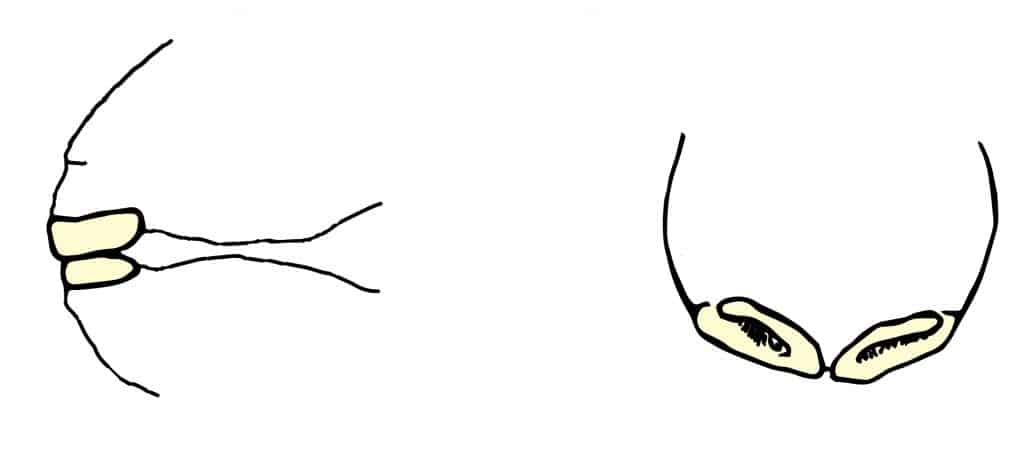
6-9 months
Eruption of the corner incisors
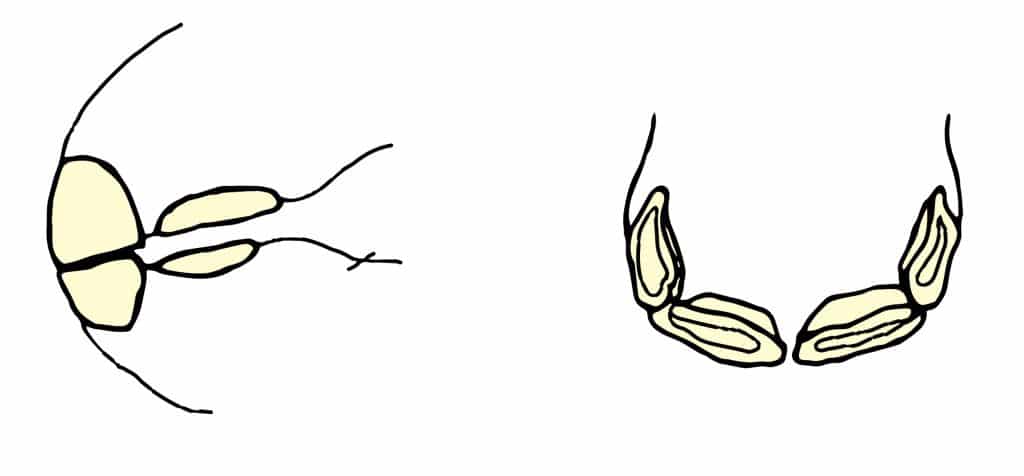
~1 year
Three premolars, one permanent molar, and all temporary incisors (6) are present
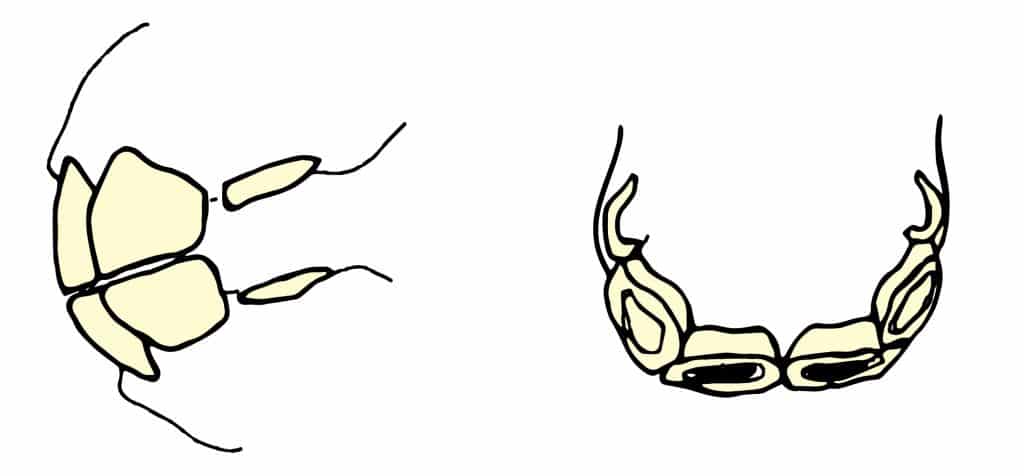
~2 years
Incisors beginning to show signs of wear, with the cup-like cavities disappearing, and the tables themselves flattened with a faint striation. It is important to distinguish between milk and permanent incisors at this age, and therefore molars form the better guide at this age.
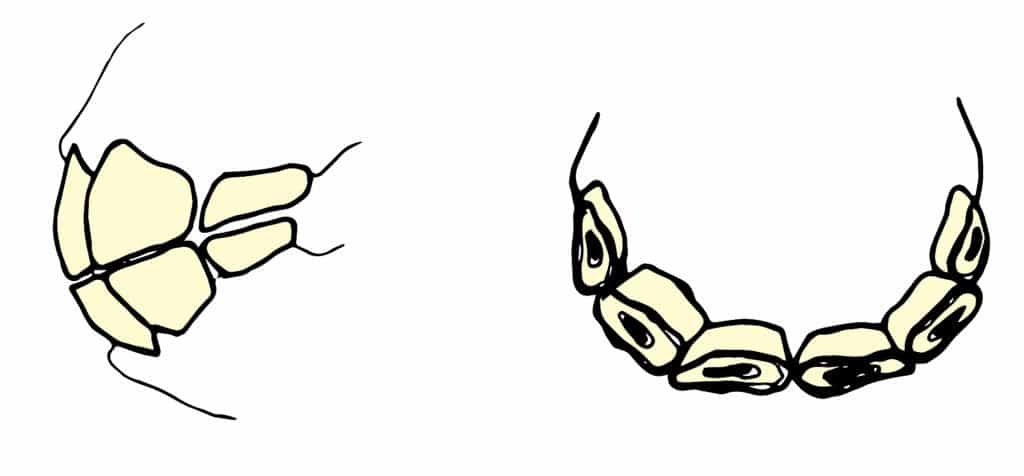
2.5 years
Central temporary incisors are lost, and the first pair of permanent incisors begin to burst through the gums
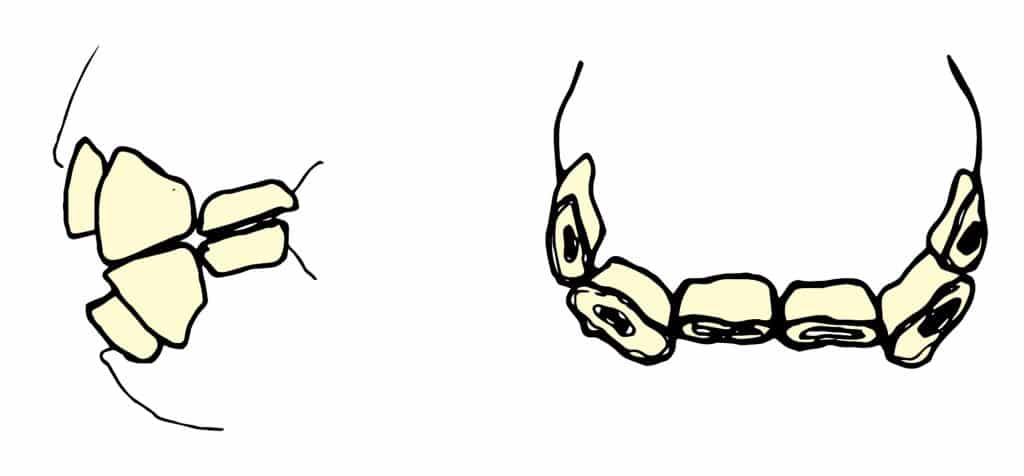
3 years
The permanent central incisors are up, and in wear. Two successive permanent molars have cut through the gums, casting aside the first and second temporary teeth which they underlay.
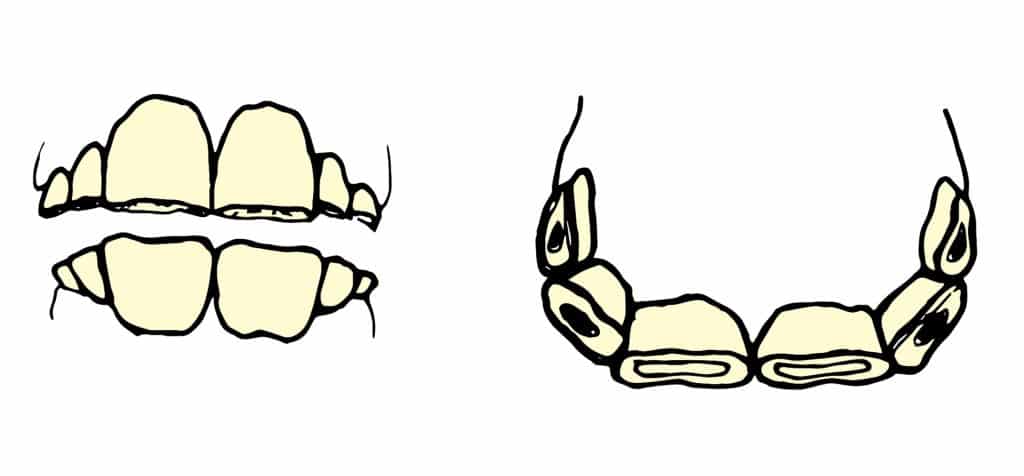
3.5 – 4 years
The second pair of permanent incisors (laterals) erupt and are level with those of the first permanent pair
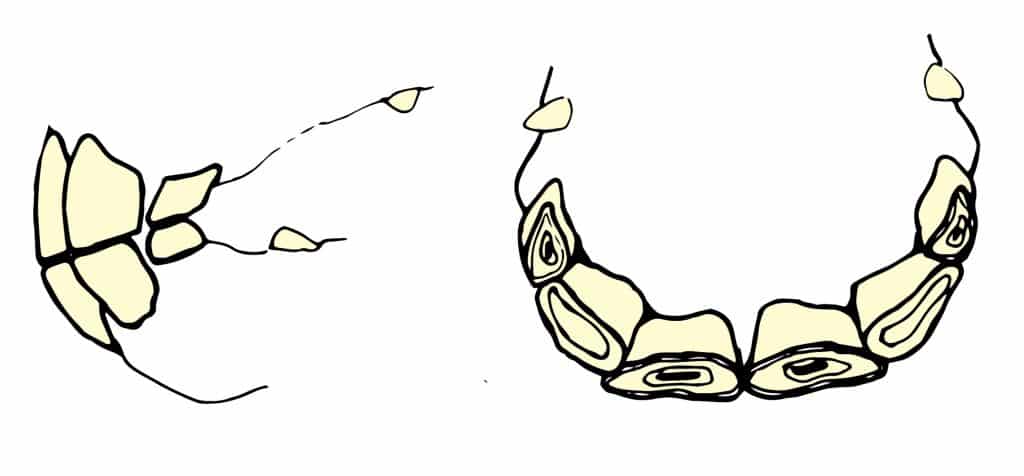
4.5 – 5 years
Corner permanent incisors have begun to erupt. Once the corner permanent incisors are fully erupted and the inner and outer edges of their tables are level the horse is determined to be five years old.

6 years
The corner incisors show wear, and the funnel-shaped cavity of the lateral two incisors may have disappeared. The central incisors also display a blackish/brownish line running transversely between the funnel-shaped cavity (infundibulum) and the anterior edge of the tooth along the tabular surface. This is the beginning of what is known as the “dental star” – an a sign that so much of the tooth has been worn away that the upper extremity of the infilled pulp cavity has been brought into view on the table.
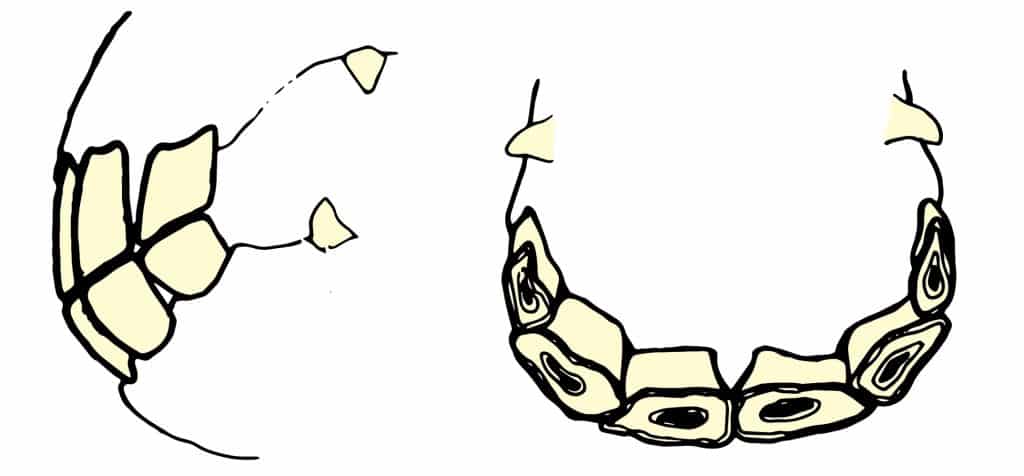
7 years
The funnel-shaped cavity (infundibulum) of the central and lateral incisors has disappeared, with the dental stars much more visible in the centrals than the laterals. By the age of eight the dental star should be obvious.
Seven years is best identified by the development of a hook (or dovetail) on the posterior edge of the top corner incisor tooth, with an accompanying notch. This hook first appears at seven, begins to wear away around eight, and by nine has disappeared from the surface altogether, leaving the tooth flat again. However, the hook and notch reappears at eleven, and remains for the rest of the horses life.
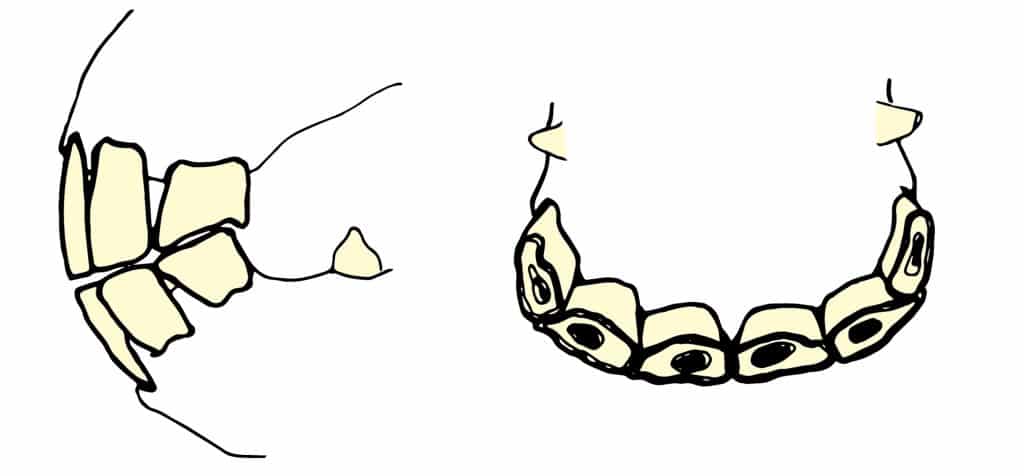
8 years +
Although it is hard to determine at this stage all of the funnel-shaped cavities (infundibulum) have disappeared from the incisors, with an apparent star in the central incisors. The star becomes apparent in the laterals at nine, and between ten and twelve is found in all of the incisors.
The tables of teeth are also a great indicator as horses get older, transitioning from oval (up to seven years), to triangular (nine to thirteen years), and then to round (with a central pulp mark) as the horse becomes older.
A notch on the upper corner incisor tooth is also of use, as a notch on the outer side of each upper corner tooth begins to travel down the tooth as a longitudinal furrow – Galvayne’s groove – beginning at nine/ten, reaching the mid point of the tooth at fifteen, and twenty when it reaches the bottom. At twenty-five it has disappeared from the upper half of the tooth, and by thirty disappeared completely.
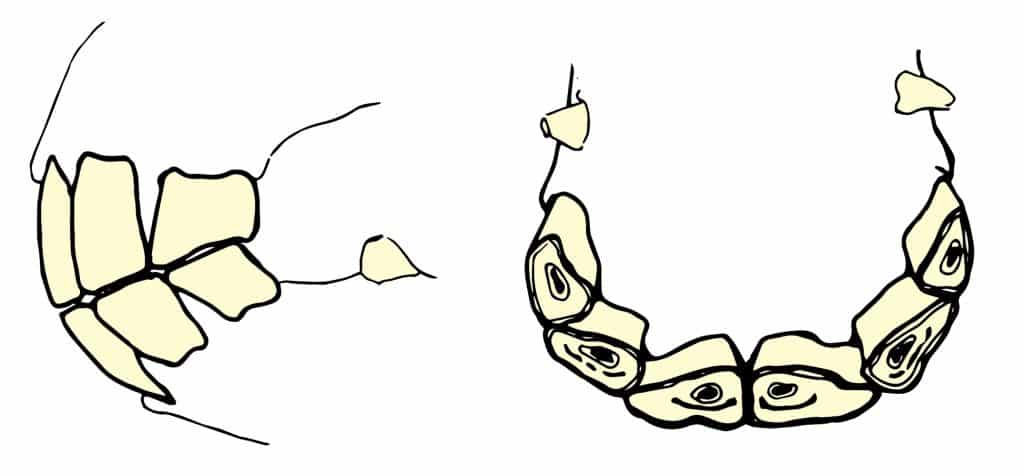
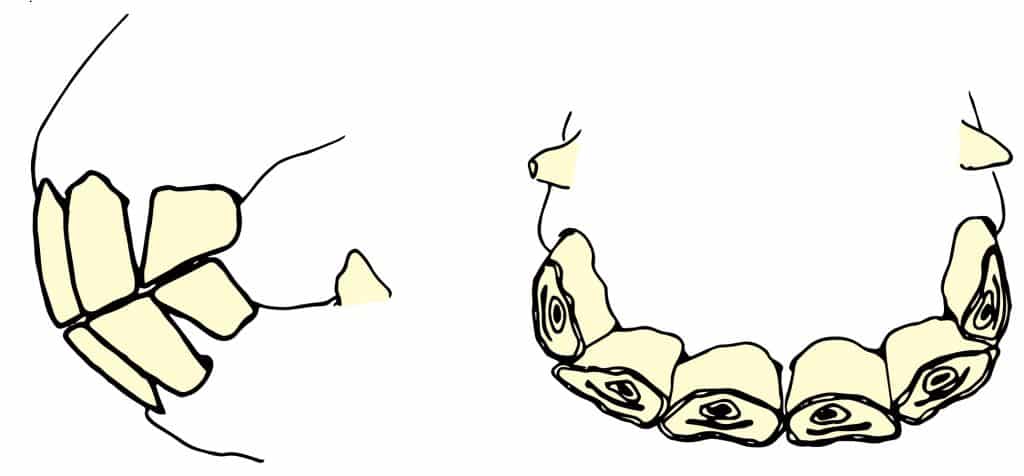
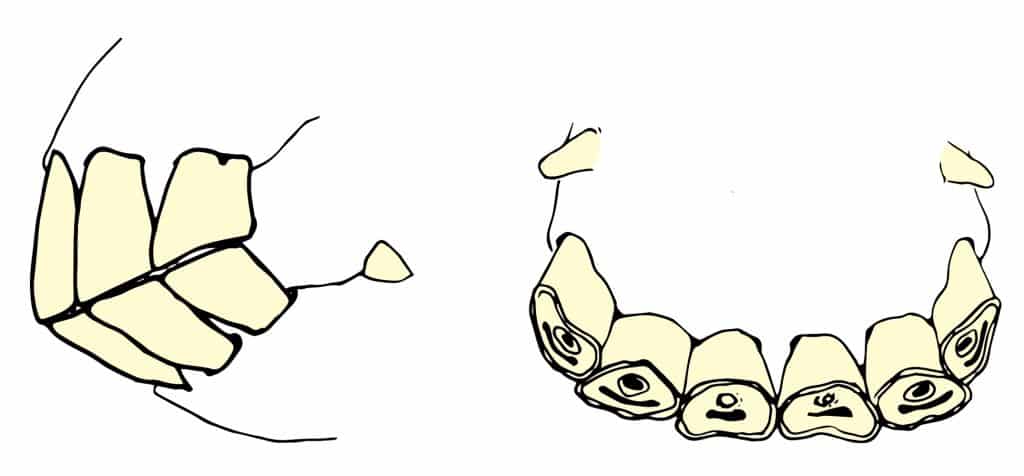

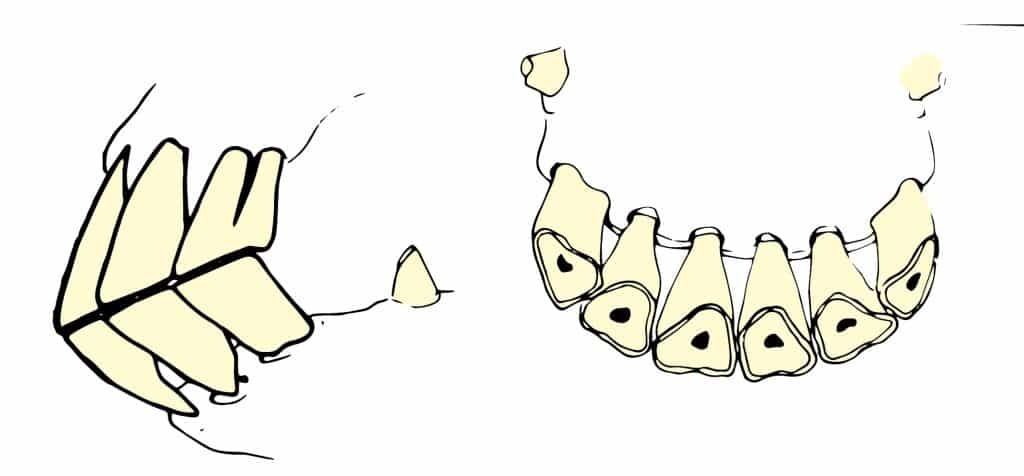
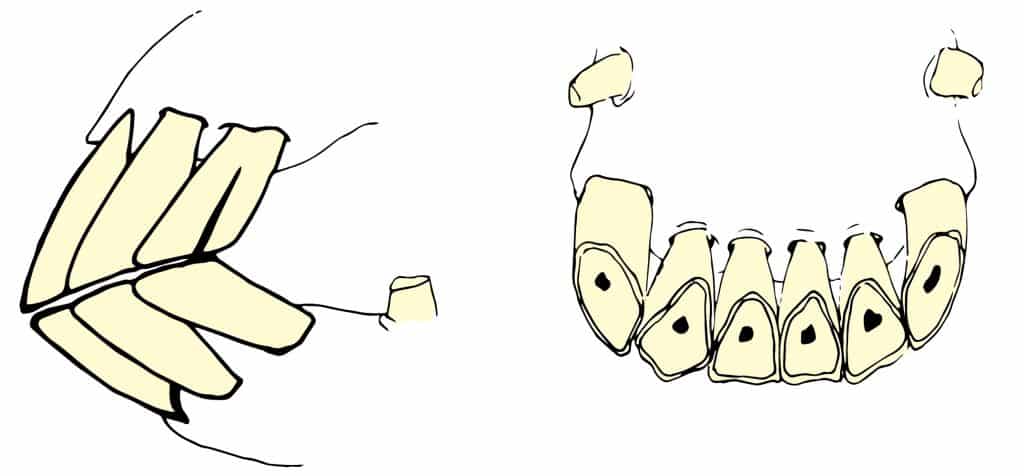
I hope this guide has helped you to age a horse by its teeth more effectively. Be sure to check out our other articles in the “facts about” series.